Oracle Cursor 游标总结
一,隐式游标
隐式游标的属性 返回值类型 意 义
SQL%ROWCOUNT 整型 代表DML语句成功执行的数据行数
SQL%FOUND 布尔型 值为TRUE代表插入、删除、更新或单行查询操作成功
SQL%NOTFOUND 布尔型 与SQL%FOUND属性返回值相反
SQL%ISOPEN 布尔型 DML执行过程中为真,结束后为假
二,显示游标
游标的属性 返回值类型 意义
%ROWCOUNT 整型 获得FETCH语句返回的数据行数
%FOUND 布尔型 最近的FETCH语句返回一行数据则为真,否则为假
%NOTFOUND 布尔型 与%FOUND属性返回值相反
%ISOPEN 布尔型 游标已经打开时值为真,否则为假
三,测试表
create table t_raynor(
id number(5),
name varchar(20),
age number(5)
);
insert into t_raynor values(1,'ray',22);
insert into t_raynor values(2,'sha',22);
insert into t_raynor values(3,'ray',null);
insert into t_raynor values(4,'sha',null);
insert into t_raynor values(5,'ray',null);

隐式游标
declare
cot number ;
begin
update t_raynor t set t.age = '' where t.id in (3,4,5) and t.age is not null;
cot := sql%rowcount;
dbms_output.put_line('num:'||cot);
end;

显示游标
–显示游标(提取ID=1 的数据)
DECLARE
cid number;
CURSOR my_cursor is
select id from t_raynor where id = 1;
BEGIN
open my_cursor;--打开
fetch my_cursor INTO cid;--获取数据
dbms_output.put_line('num:' || cid);
close my_cursor; --关闭
END;

–显示游标(提取ID=1,2,3 的数据)
DECLARE
cid number;
CURSOR my_cursor is
select id from t_raynor where id in(1,2,3);
BEGIN
open my_cursor;--打开
for i in 1..3 loop
fetch my_cursor INTO cid;--获取数据
dbms_output.put_line('id:' || cid);
end loop;
close my_cursor; --关闭
END;
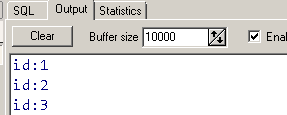
–显示游标(提取ID=1,2,3 的数据)
DECLARE
CURSOR my_cursor IS
select id from t_raynor where id in(1,2,3);
BEGIN
FOR aa IN my_cursor LOOP
dbms_output.put_line('id:' || aa.id);
END LOOP;
END;

–显示游标(提取ID=1,2,3 的数据) :快速游标
DECLARE
BEGIN
FOR aa IN (select id from t_raynor where id in(1,2,3)) LOOP
dbms_output.put_line('id:' || aa.id);
END LOOP;
END;

–显示游标的属性 1
DECLARE
CURSOR my_cursor IS
select id from t_raynor where id in(1,2,3);
BEGIN
open my_cursor;
if my_cursor%isopen THEN
dbms_output.put_line('OPEN' );
end if;
END;

– 显示游标的属性 2
DECLARE
v_id number;
CURSOR my_cursor(p_id number) IS
select id from t_raynor where id in(p_id,2,3);--定义游标的参数可以作为SELECT语句的条件
BEGIN
open my_cursor(1);--OPEN的时候需要 写入参数值
LOOP
FETCH my_cursor INTO v_id;
EXIT WHEN my_cursor%NOTFOUND;--当游标循环完成 退出
DBMS_OUTPUT.put_line(v_id);
END LOOP;
END;
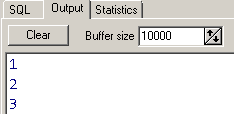
– 显示游标的属性 2
DECLARE
v_id number :=1;--通过变量给游标传值
CURSOR my_cursor IS
select id from t_raynor where id in(v_id,2,3);
BEGIN
open my_cursor;
LOOP
FETCH my_cursor INTO v_id;
EXIT WHEN my_cursor%NOTFOUND;
DBMS_OUTPUT.put_line(v_id);
END LOOP;
END;

–动态SEL
DECLARE
v_id number;
str varchar2(200);
BEGIN
str:='select id from t_raynor where id =1';
execute immediate str into v_id;--SELECT...INTO...语句存放在STR字符串中,通过EXECUTE语句执行。
dbms_output.put_line(v_id);
END;
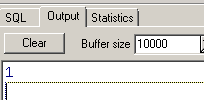
–
DECLARE
TYPE cur_type is ref cursor;
my_cur cur_type;
my_rec t_raynor%rowtype;
str varchar2(200);
letter char:= 'a';
BEGIN
loop
str:='select name from t_raynor where name like ''%'||letter||'%'' ';
open my_cur for str;
dbms_output.put_line('包含字母'||letter||'的名字:');
loop
fetch my_cur into my_rec.name;
exit when my_cur%notfound;
dbms_output.put_line(my_rec.name);
end loop;
exit when letter='z';
letter:=chr(ascii(letter)+1);
end loop;
END;
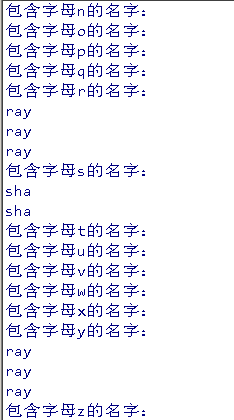
–复杂更新
declare
cot number ;
scot number;
begin
scot := 0;
for aa in (SELECT t.age, t.name FROM t_raynor t where t.age is not null) loop
update t_raynor tr
set tr.age = aa.age
where tr.name = aa.name
and tr.age is null;
cot := sql%rowcount;
dbms_output.put_line('cot:'||cot);
scot := scot + cot;
end loop;
dbms_output.put_line('影响的总行数:'||scot);
end;

declare
begin
update t_raynor t
set t.age =
(select t1.age
from t_raynor t1
where t1.name = t.name
and t1.age is not null
and rownum = 1)
where exists (SELECT 1 from t_raynor t2 where t2.name = t.name);
dbms_output.put_line('影响的总行数:'||sql%rowcount);
end;


-------------------- ref cursor
DECLARE
rz1 sys_refcursor;
ray t_raynor%rowtype;
BEGIN
open rz1 for
SELECT * FROM t_raynor;
fetch rz1
into ray;
loop
dbms_output.put_line(ray.id);
fetch rz1
into ray;
exit when rz1%notfound;
end loop;
END;
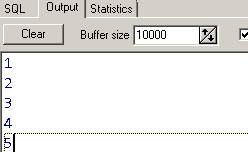
快速游标
DECLARE
BEGIN
for aa in(
SELECT t.id FROM t_raynor t where t.id ='1')
loop
insert into t_raynor values(aa.id);
end loop;
END;
最后
以上就是超级高山最近收集整理的关于Oracle Cursor 游标总结(简单样例附带表结构)的全部内容,更多相关Oracle内容请搜索靠谱客的其他文章。
本图文内容来源于网友提供,作为学习参考使用,或来自网络收集整理,版权属于原作者所有。








发表评论 取消回复